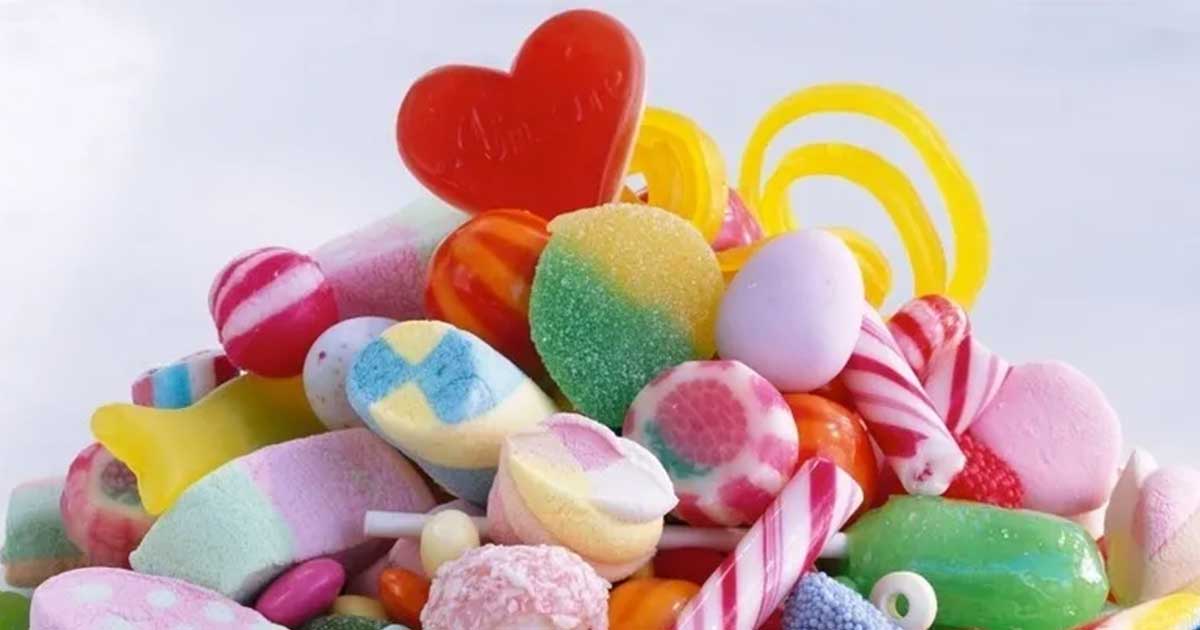And so, another Christmas has passed, leaving behind a whole heap of colourful packaging that brought with it enough sugar to send every living thing into a frenzy. And now, as the year-end approaches rapidly, we are either facing up to or denying the new layer of visceral fat that has squeezed its way behind our waistbands thanks to the black magic of fructose. While fructose might be OK in small amounts if consumed in an apple or other piece of fruit, our bodies are not equipped to deal with the kind of levels we expose it to these days.
But I haven’t had any fructose, I hear you say! And that’s where we’re all wrong. The problem with refined sugar is that it doesn’t just contain glucose which provides our cells with vital energy. It also contains fructose which the liver converts to fat. It is estimated that over five million Australians have fatty liver disease but only 6,000 of them got it from alcohol. According to a study carried out on behalf of the Australian Government, over two thirds of Australians are either obese or overweight. I wonder if there is a link between that and the fact that the average Australian consumes around 60 grams of sugar per day? (This figure increases to 77 grams for Americans). I’m inclined to think so. Especially when we take into account that the World Health Organisation recommends no more than 30 grams per day.
According to the author of Sweet Poison, David Gillespie, ‘If the average Australian family of four had to buy the amount of sugar they are consuming, they would be going to the supermarket, taking six one kilogram bags of sugar off the shelf – six; putting them in the trolley, taking them home, eating them all in that week, then going back the next week and doing it all again.’ Part of the reason for this is that sugar is hidden away in places you least expect it such as muesli bars, some of which contain more sugar than Kit Kats for goodness sake! Products that are sold as ‘low-fat’ are bulked up with sugar to replace the weight of the fat that’s been removed and of course to ensure your brain wants more. Sauces such as ketchup are approximately one quarter sugar. Barbecue sauce is over one third sugar. Flavoured milks, breakfast cereals, sports drinks and even shop-bought smoothies are all laden with the stuff. The worst culprit of all is the fizzy drinks such as Coca-Cola, just one can has more than twice the recommended daily allowance of sugar.
The addiction
To tackle any addiction, it’s helpful to understand what the substance is doing to the body and why it feels so difficult to give it up. When I decided to stop drinking, I found it hugely helpful to research the life out of alcohol so that I could face the challenge with my eyes and mind wide open. After learning what I did, I came to the conclusion that my carefree days of drinking were well and truly over as I knew too much. In researching and writing this blog today, I am hoping that I will learn so much that I will never look at sugar and sweeteners (they are as bad as each other) as a treat again. Instead, I will gladly choose a healthier option because I know how much better I will feel for it.
Most of us have grown up believing that sweets, ice-cream and chocolate bars are a reward, right? Pedlars of sugary products invest billions in advertising, Coca -Cola alone spends around $4 billion per year. Their campaigns are clever and designed to make us feel really good about consuming sugar. The global sugar industry is a beast of a machine and generates over $100 billion in revenue. So, let’s pick this sugar addiction apart now and see it for what it is.
The Cue-Urge-Reward cycle is one which many of us get trapped in. We see the sugary item, a release of dopamine is triggered, urging us to ‘get it’ because the body needs it for energy. As soon as we taste the sweetness our brain releases opioids and beta-endorphins which makes us feel great, momentarily. This is the sugar hit. According to research in this area, sugar lights up the same reward centres in the brain as nicotine, cocaine and sex. But it doesn’t last long. It then becomes too easy to develop a habit when we are surrounded by cues all the time. The more sweetness we consume, whether real or artificial, the more we are messing with the chemical balance of the brain. Thomas Campbell, a retired NASA Physicist and author of My Big Toe said ‘The brain runs on glucose. If the glucose level is constantly going up and down, zinging high and low and back and forth then your mental function is just unstable. If your glucose level is stable and not fluctuating, then you have more clarity.’
One of the greatest benefits I love about being sober is the clarity of mind that it gives me. I find it fascinating that we can also find more clarity by eliminating refined sugar and artificial sweeteners from our diet. I met a Mum recently who told me that her son’s ADHD symptoms have greatly improved since he reduced his sugar intake. Given that sugar has such a huge impact on the brain, I’m inclined to think it might also contribute towards anxiety and depression. I wouldn’t be at all surprised.
Sugar & disease
Here are some of the diseases that are linked to sugar.
- Cardiovascular Disease: The extra fat in the blood caused by sugar helps build plaque that causes arteries to block over time.
- Cancer: Studies have shown that sugar molecules can promote the growth of cancerous cells. High-sugar diets have also been linked to pancreatic cancer. It’s interesting that MRI scans are now using glucose as a contrasting agent to help identify cancer cells because they cling to the glucose to give them energy to grow.
- Type 2 Diabetes: is one of the fastest growing diseases in the world and is estimated to kill someone every six seconds. It is characterised by high blood sugar, insulin resistance and can be treated by making changes to diet.
- Gout: There is a link between high fructose consumption and high levels of uric acid which can also affect the kidneys.
- Alzheimer’s Disease: People on a high-sugar diet are four times more likely to develop this disease.
- Kidney Failure: Too much sugar in the blood puts pressure on the kidneys.
- Candida: Sugar feeds these parasites that impact badly on gut health.
In addition to these, sugar has been shown to impact on the body’s immune system, increase inflammation, cause high blood pressure and of course, tooth decay.
And for anyone who cares about their skin, apparently sugar ages us. Through a process of glycation triggered when sugar hits the bloodstream, our skin loses its buoyancy and resilience, then sags and looks old and wrinkly. Who knew!
The withdrawal
The good news is that sugar withdrawal doesn’t last long at all. According to Kathleen Desmaisons, author of The Sugar Addict’s Total Recovery Program, ‘There is a grief process for some people, and you hit the grey and the flat, and then one day you move from the grey to the calm, and then you wake up one day and say ‘I really want to live from this place.’ I strongly recommend you watch That Sugar Film by Damon Gameau who put himself through hell on sugar in order to find out the hard way what sugar does to the body. Over 60 days, he consumed 160 grams of sugar per day and suffered all the consequences such as adding ten centimetres of visceral fat around his belly and eight and a half kilos in total weight. It’s important to remember that it’s the sugar itself that causes the cravings. Once you cut sugar out of your diet, the cravings will start to go quickly. According to Damon Gameau, it gets easier and easier every time you say no.
Like I hoped, our days of carefree sugar-scoffing should be over now, now that we know too much. Sugar is clearly not a reward, and more of a poison. Isn’t it time we accepted this and clawed back control over what we consume and what actually makes us feel alive and well?
If you think you cannot live without the taste of sweetness, then you can consider this tip from my sister-in-law and nutritionist, Samantha Lentz; ‘Limit it mostly to fruit sugars and healthy sugar alternatives such as honey, maple syrup and coconut sugar. These still raise our glycaemic index whereas Stevia and monk fruit don’t. I personally prefer monk fruit powder which is extracted from the monk fruit also known as lo han guo or swingle fruit. It is a small round fruit grown in Southeast Asia and, unlike Stevia, it doesn’t have an aftertaste. It does have nutty undertones and a nice balanced flavour, and it is used in Eastern medicine for its digestive qualities.’
For more on Damon Gameau, and to access some of his recipes, visit https://thatsugarmovement.com/
I will leave you with a quote from Kathleen Desmaisons, author of The Sugar Addict’s Total Recovery Program:
I’m not saying life should be without sweetness, but let’s make that sweetness come from life and sensations – not from a bottle, a piece of pie or artificial sweeteners.
Thanks for taking the time to be here today. I wish you the best of health and happiness for 2021 and beyond.

